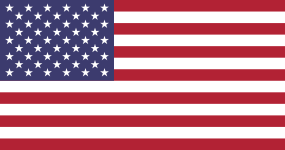The first type of government in America was based primarily on state government. Prior to the signing of the Constitution, America had been made up of thirteen colonies, which had been ruled by England.
Following the Revolutionary War, these colonies, although they had formed a league of friendship under the Articles of Confederation, basically governed themselves. They feared a strong central government like the one they lived with under England's rule.
However, it was soon discovered that this weak form of state government could not survive and so the Constitution was drafted.
The Constitution :
The Constitution :
- defines and limits the power of the national government,
- defines the relationship between the national government and individual state governments, and
- guarantees the rights of the citizens of the United States.
This time, it was decided that a government system based on federalism would be established. In other words, power is shared between the national and state (local) governments.
The opposite of this system of government is a centralized government, such as in France and Great Britain, where the national government maintains all power.
Sharing power between the national government and state governments allows to enjoy the benefits of diversity and unity. For example, the national government may set a uniform currency system.
Could you imagine having 50 different types of coins, each with a different value? You would need to take along a calculator to go shopping in another state. By setting up a national policy, the system is fair to everyone and the states do not have to bear the heavy burden of regulating their currency.
On the other hand, issues such as the death penalty have been left up to the individual states. The decision whether or not to have a death penalty, depends on that state's history, needs, and philosophies.
National versus State Government
After the American colonies won their independence from England, the thirteen colonies became thirteen states. The new states formed a league so they could work together. Their system of government was described in a document called the Articles of Confederation. In this system, the state governments had most of the power. The national government was very weak. This was very different from the government under the King.
The Founding Fathers (James Madison, G Washington , ........) saw that this system left the nation too weak. They decided to develop a new system of government. They wrote a new document, the Constitution, to replace the Articles of Confederation. The Constitution made a stronger national government. It divided power between the national government and the state governments. This system is called federalism.
What is Federalism?
Since the signing of the Constitution, the division of power in the United States has been based on sharing power between the national government and individual state governments. This is known as federalism.
Let's take a look at how power is distributed in the United States:
| National Government | State Government |
|
|
In addition, the national government and state governments share the following powers:
|
In order to carry out these duties, the national government and individual state goverments are divided into areas. Each area is given a duty to perform.
THE 3 BRANCHES
Executive Branch
The executive branch of Government makes sure that the laws of the United States are obeyed. The President of the United States is the head of the executive branch of government. This branch is very large so the President gets help from the Vice President, department heads (Cabinet members), and heads of independent agencies.
- President: Leader of the country and commands the military.
- Vice President: President of the Senate and becomes President if the President can no longer do the job.
- Departments: Department heads advise the President on issues and help carry out policies.
- Independent Agencies: Help carry out policy or provide special services.
Legislative Branch
The U.S. Congress

The U.S. Congress is made up of two parts, the House of Representatives and the Senate.
Congress meets at the U.S. Capitol in Washington, D.C.
Its primary duty is to write, debate, and pass bills, which are then passed on to the President for approval.
Other Powers of Congress
- Makes laws controlling trade between states and between the
United States and other countries. - Makes laws about taxes and borrowing money.
- Approves the making of money.
- Can declare war on other countries.
Judicial Branch
The judicial branch of government is made up of the court system. The Supreme Court is the highest court in the land.
Article III of the Constitution established this Court and all other Federal courts were created by Congress. Courts decide arguments about the meaning of laws, how they are applied, and whether they break the rules of the Constitution.
The Supreme Court
 The Supreme Court is the highest court in the United States.
The Supreme Court is the highest court in the United States.
The Supreme Court hears cases that have made their way through the court system, but of the more than 7,500 cases that are sent to the Supreme Court each year, only about 80 to 100 cases are actually accepted. Once the Supreme Court makes a decision, it can only be changed by another Supreme Court decision or by amending (changing) the Constitution. This is a very important power that can affect the lives of a lot of people. Also, since the main power of the Supreme Court is to decide cases that challenge the Constitution, the Court must decide if the case they receive really challenges the Constitution.
The Supreme Court is made up of nine Justices. One of these is the Chief Justice. They are appointed by the President and must be approved by the Senate. Justices have their jobs for life, unless they resign, retire, or are impeached by the House and convicted by the Senate (the removal process as described by the Constitution).



























































